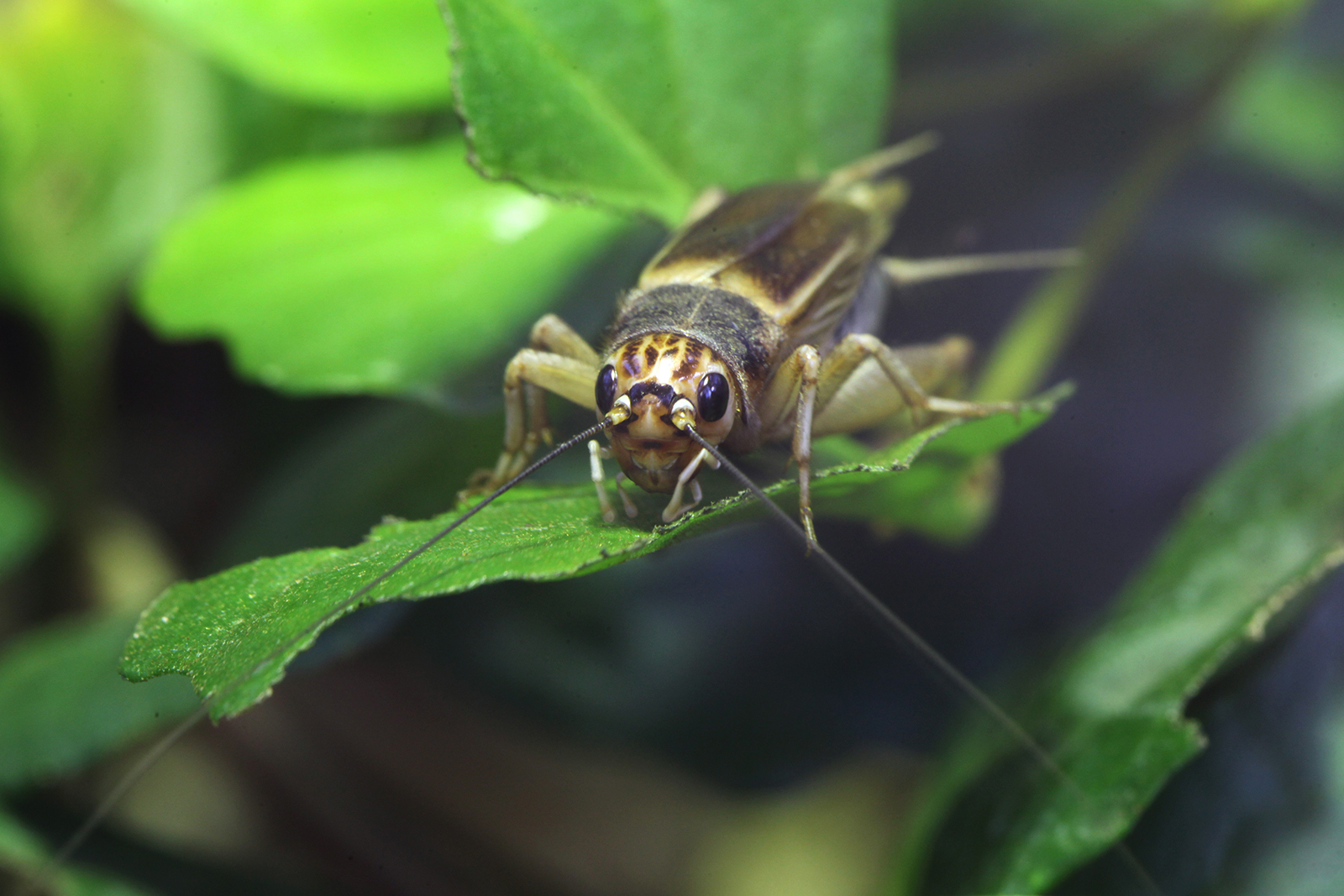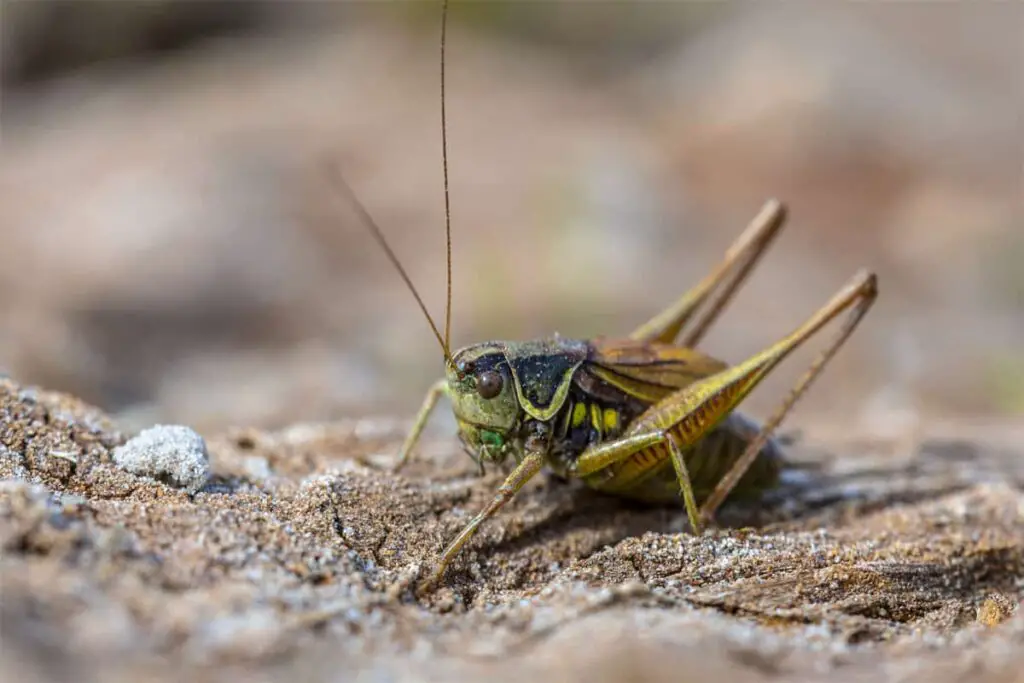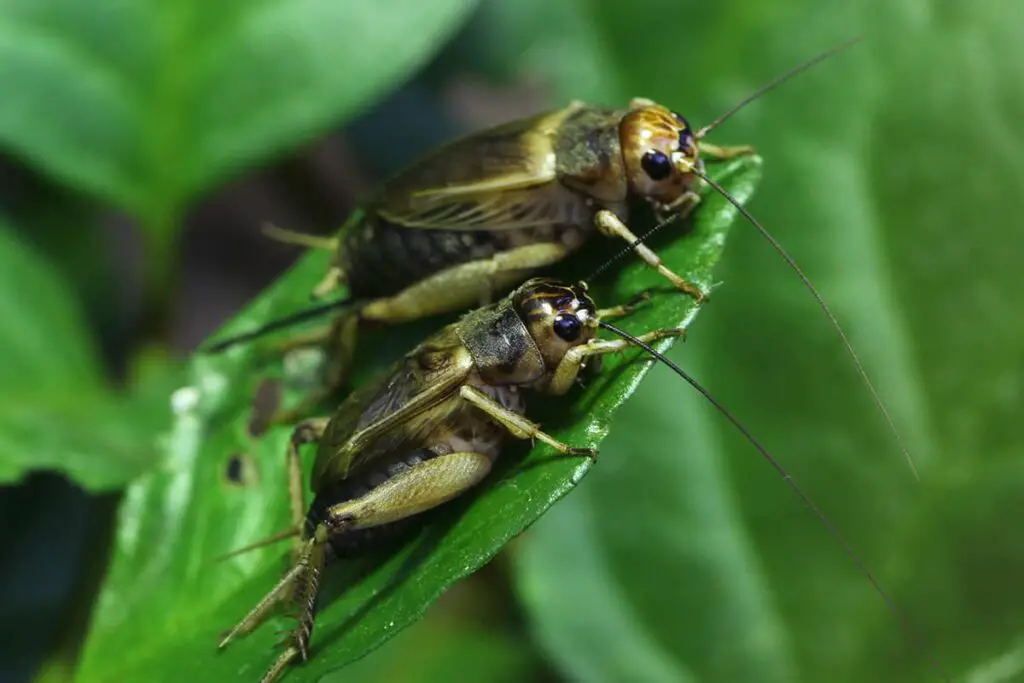
Cricket infestations can be annoying, especially when they’re hiding inside our homes and making those persistent chirping sounds. One obvious solution is to find a way to lure them out of their hiding spots and either catch them or remove them from our space. I have discovered several methods that can help with this process and effectively lure crickets out of hiding and let you finally sleep through the night.
Crickets are known to be attracted to certain smells, such as molasses or beer. By placing these items in bowls near suspected hiding spots we can more easily entice them into the open. Some of their preferred hiding places include dark corners, the gaps between pieces of furniture, and behind appliances.
Another useful technique is taking advantage of their natural responses to certain stimuli. For example, crickets can be attracted to pheromones, which can be utilized to lure them out of their hiding spots. By implementing one or both of these strategies, I can confidently say that luring crickets out of hiding is achievable and can lead to a more peaceful living environment.
Why Crickets Hide
Crickets, like many other insects, have natural instincts to protect themselves from predators. Their tendency to hide is a survival mechanism that helps them avoid threatening situations.
In their natural habitat crickets usually hide under rocks, logs, and plant debris during the daytime to shelter from possible attacks by predators such as birds, spiders, and other insect-eating animals. They also use these hiding spots to retain moisture and stay cool, especially in hot and dry environments. This behavior not only helps crickets conserve energy but also allows them to remain undetected by predators.
When crickets find their way into homes, they tend to continue their hiding behavior. This is probably because our homes offer many dark and quiet hiding spots that mimic their outdoor environment. Common hiding spots inside a home include cracks and crevices, behind furniture, or in dark corners. Additionally, crickets are nocturnal creatures, meaning they are mostly active at night. The darkness offers them an extra layer of protection.
Another reason for their hiding behavior is their sensitivity to vibrations. Crickets have highly developed senses that allow them to detect vibrations from potential threats. As a result, they tend to hide whenever they feel threatened or disturbed by the presence of people or the movement of objects around them.
Understanding the reasons behind cricket hiding behavior can help us devise more effective strategies to lure them out of hiding when they become a nuisance in our homes. This knowledge also allows us to better appreciate the fascinating survival instincts of these seemingly simple insects.
Locating the Cricket
When I’m trying to locate a cricket in my home, the first thing I do is turn off all the lights and go from room to room. I wait quietly in each room for 2-3 minutes. If the cricket is in the room, it will typically chirp during this time, clueing me in on its whereabouts. If I don’t hear the chirping nearby, I move on to the next room and repeat the process until I’ve pinpointed which room the cricket is in.
Once I know which room the cricket is hiding in, I can try some simple cricket traps to lure the cricket out of hiding. One useful method is to place a bowl or cup filled with an edible substance or an aroma that’s attractive to crickets. Some options include molasses, beer, cereal, oats, or soda. By placing the container near the cricket’s hiding place you can effectively draw it out of hiding and into the trap.
Another trap I’ve had success with is the newspaper trap. In this method I prepare some irresistible cricket food by mixing equal parts sugar and plain bread crumbs. Then I place the bait in a rolled-up newspaper and leave it near the suspected hiding spot. When the cricket is attracted to the food, it will enter the newspaper roll, making it easier to catch.
I’ve also found that using a cricket call, which can be purchased at most sporting goods stores, can sometimes help in luring crickets out of hiding. Cricket traps, which can be bought at pet stores, can also be effective when paired with cricket food bait. It’s important to experiment with different methods, as some may be more effective than others depending on the specific cricket and hiding location.

Safe Luring Techniques
Using Light
One way I have found effective to lure a cricket out of hiding is by using light. At nighttime crickets are attracted to sources of light. I typically switch off all the lights in the room and turn on only one, which can help to guide the cricket towards it. This makes it easier for me to locate and catch the cricket.
Using Food
Another safe method of luring crickets is by using food. Crickets love molasses, so I often create a simple trap by mixing molasses with water in a shallow bowl. I then place the bowl in the area with the cricket problem. The cricket finds its way to the molasses and eventually gets trapped in the solution, allowing me to catch it easily. WikiHow has specific instructions on preparing this trap.
Humidity and Temperature
I’ve found that controlling humidity and temperature in the environment can also help in luring crickets out of hiding. Since crickets prefer damp and warm areas, I try to reduce the moisture levels and lower the temperature in the room. This makes the hiding spots less appealing to the cricket and encourages it to leave the area.
If possible, I also try to eliminate any potential hiding spots by decluttering the room and sealing any small gaps or cracks in walls and floors. This helps to prevent the cricket from finding a new place to hide.
Handling a Cricket Once Found
Once I’ve successfully lured a cricket out of hiding, I need to handle it with care to avoid harming it or letting it escape. There are a few simple steps I can follow to make this process as smooth as possible.
First, I recommend preparing a container to safely secure the cricket once it’s been caught. A small jar or plastic container with a lid should suffice. Next, I gently approach the cricket without making any abrupt movements, as this might scare it back into hiding.
To pick up the cricket, I carefully slide my hand beneath it or use a thin piece of paper to coax it onto a flat surface. It’s important not to grab the cricket directly, as this can cause injury to the delicate insect. Once the cricket is on the flat surface or in my hand, I can slowly transfer it into the prepared container by gently tilting the surface or lowering my hand into the container.
With the cricket safely inside, I secure the lid on the container, ensuring it won’t escape while being transported to its designated release area. It’s best to release the cricket outdoors and away from my home, ensuring it won’t find its way back inside.
Preventative Measures
As I’ve learned during my research, the best way to lure crickets out of hiding is to prevent them from hiding in the first place. In this section, I’ll share my insights and tips on how to achieve this.
Seal Entrances and Hiding Spots
One of the key ways to prevent crickets from hiding in your home is by sealing any potential entry points. These insects can squeeze through surprisingly small cracks and gaps, so it’s essential to carefully examine your home’s exterior and seal off any possible access points. This includes checking for cracks around windows and doors, as well as any gaps in your home’s foundation.
Maintain a Clean Environment
Keeping your home clean and well-maintained can also deter crickets from seeking refuge. I found that messy environments provide ample hiding spots for these pests, so it’s important to regularly tidy up cluttered spaces and keep your home organized. In addition, removing potential food sources is essential, as crickets can be attracted by crumbs, pet food, and other accessible food sources in your home.
Furthermore, maintaining a proper outdoor environment is equally important. Crickets prefer moist and dark areas, which means it’s vital to manage your outdoor space by reducing excessive moisture and keeping the area well-lit at night.
By following these preventative measures, not only will you make it more difficult for crickets to hide, but you’ll also make your home much less inviting for these invasive insects in the first place.
Conclusion
In my experience, luring crickets out of hiding is quite simple if one follows the right approach. I’ve found that using appealing scents and food sources, like a bowl containing molasses, beer, or granular food, is an effective method to attract crickets. You don’t need to use much, and placing these lures in areas where crickets are likely to be hiding increases the chances of them coming out.
Moreover, I noticed that crickets are attracted to certain light sources. Setting up a light close to their hiding spots will also help in luring them out. However, it’s important to note that bug zappers might not be very practical for crickets, as they tend to jump instead of fly.
Another way I’ve successfully lured crickets out of hiding is by setting up a vinegar trap. Placing a piece of fruit in a bowl filled with vinegar makes a perfect cricket bait, as they are drawn to the fruit and end up getting trapped in the vinegar.
Ultimately, understanding the preferences and habits of crickets is crucial in effectively luring them out of hiding. By combining the mentioned techniques, it becomes even easier to catch these elusive critters and manage their presence within indoor spaces.
Driven by a passion for those tiny creatures that rule our world, we at Bug Domain strive to be your go-to resource for information on insects.



